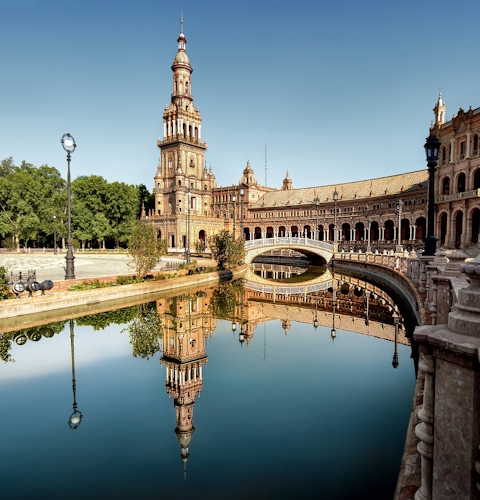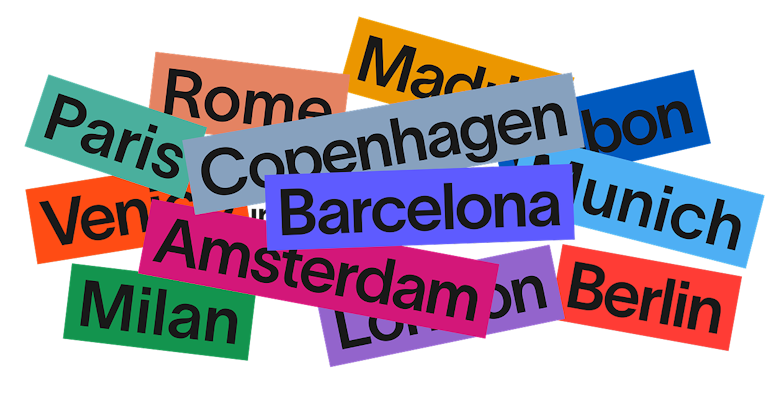
An Introduction to Seville: What Makes this Destination So Special?
Seville’s artistic and cultural patrimony makes this city one of the most popular tourist destinations. This region boasts a wealth of world-famous sites that you can’t miss out on. Want to know more?
Let’s quickly take you through Seville’s history.
The capital of Andalusia has a unique mixture of cultures and ethnicities, thanks to its historical background. Traces of past colonies and insights are observable in surrounding architecture…
Seville was actually once known as Hispalis- a Roman colony at the time. When Seville fell to the Moors (Muslim inhabitants from the Iberian peninsular) during the 8th century, Hispalis then went under the name Al-Andalus. In 1248, King Fernando III and his army ousted the Moors from the city, and that’s when the Castilian rule began. Synagogues were subsequently turned into churches, and Christianity was imposed. The Golden Age then began in 1492, when Christopher Columbus made his first voyage to the New World. Seville then became a wealthy and powerful city. All these colonies have left their mark and shaped what Seville is today! Most of Seville’s architecture you see today derives from the Arabic culture, and several buildings from the Al-Andalus period still stand today. You could say that the past remains alive.
Now that we have briefly covered la historia, let’s take you on a little tour.
Seville Cathedral
The Cathedral of Saint Mary of the See is a must-see ;). It is the largest Gothic Cathedral in the world and dates back to the 15th century! It was built in tribute to the Catholic dominion and to boast the city’s wealth and prestige! The cathedral was built on the site of the 12th century Almohad Mosque during the reign of the Almohad dynasty when Seville was known as Al-Andalus. However, after the Castilians took over, the mosque was completely transformed into a Christian Church in 1401- an act of triumph over the vanquished Moorish kings. The Giralda is the only thing that remains of the mosque- this belltower is actually an Arab minaret. A Renaissance style top, El Giraldillo, was then added by the Spanish conquistadors. It is a weather vane and a bronze statue of a female figure bearing a cross to symbolise Faith. How cool is that?
There are 15 doors on the cathedral’s four facades, each with a unique carving. Let’s take you inside!
The cathedral’s nave is literally the longest of any other cathedral in Spain and reaches a height of 42 metres. It also houses 80 chapels, one called the Capilla Mayor, which has an inspiring Gothic altarpiece. It is the life work of one single craftsman, Fleming Pieter Dancart. He carved 45 scenes from the life of Christ and covered these carvings with gold. It is said to be the largest and richest altarpiece in the world. The Sacrista Mayor houses many famous artworks by Goya, Murillo and Zurbarán. I won’t go into this too much, find out yourself! There’s still so much more to see, like the Capilla Real (a domed Renaissance chapel), the Patio de los Naranjos and more. It’s baffling to think about how someone could even conceptualise and create a church like this. Did you know it took around 105 years to build? Even better, Christopher Columbus’ tomb is here.
The Alcázar
The Real Alcazar, historically known as al-Qasr al-Muriq, is located in the heart of Seville and is one of the oldest palaces still in use in the world. It is the witness of different historical periods of the city and goes back to the 11th century when Muslim authorities decided to build a fortress. The palace is an example of the Mudéjar style (a direct product of the mix of Islamic and Christian culture). It combines Romanesque, Gothic and Renaissance features, added over the past 500 years of construction. Visit the Patio de las Doncellas courtyard; it is terrific. The combination of vibrant colours and patterns are very distinctive and goes well with the exotic climate and blue sky.
Go take some inspiration from the relics that have passed through the building across the ages.
María Luisa Park
María Luisa Park is the most famous park in Seville and was formerly the private gardens of San Telmo Palace. Princess Maríá Luisa, however, donated the land to the city in 1893. This park was used for the Hispano-American Exhibition and was renovated by the French Engineer Jean-Claude Nicolas Forestier. He adapted his work to Seville’s landscape, giving it a romantic and vibrant touch. You can take a walk down paradise and look out for exotic palm trees, orange trees, flower beds, tiled benches and arabesque fountains and pavilions. María Luisa Park is an excellent spot for photography.
The park’s centrepiece is the Plaza de España …
This plaza was designed to complement Seville’s rich cultural mix by the great architect Aníbal González for the 1929 Ibero-American Exposition. At its centre, there is a spectacular fountain created by Vicente Traver himself, where you can take charming pictures and admire the fascinating square. A canal runs through this magnificent plaza where you can travel by boat. Four bridges curve across the channel, representing ancient Spanish Kingdoms of Castile, Navarre, Aragón and León. This place is purposely built in the style of Renaissance Revival and Moorish Revival architecture. Surrounding the building are 49 pavilions, each dedicated to a Province of Spain, with beautifully crafted tiles- typical of Seville. Everyone goes there to take incredible pictures and simply admire the view.
So, there you go, the top four sites you MUST see when visiting Seville! Don’t forget to explore further, sample the Spanish cuisine, try some of Seville’s delicacies, or even watch some brilliant Flamenco performances!




















